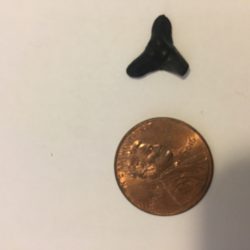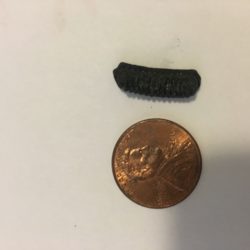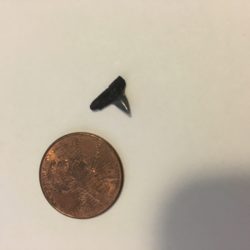-
Bradley Meyers became a registered member 4 years, 9 months ago
4 years, 9 months ago4 years, 9 months ago -
Bradley Meyers posted a new specimen. 4 years, 9 months ago
4 years, 9 months ago4 years, 9 months agoBradley Meyers has contributed specimen mFeM 57614 to myFOSSIL!
-
Hi, @bradley-meyers – do you have a photo of the other side of the tooth you could upload? That will help our experts confirm your fossil identification! Talk to you soon, Jen
-
The image is unclear and very contrasty. I sharper picture with less contrast would allow better identification. You can use any of many image processing programs (many of which are free on the internet and some included in versions of Windows, Apple, or even on phones) to adjust the contrast.
-
-
Max Jones and
Bradley Meyers are now friends 4 years, 9 months ago
4 years, 9 months ago4 years, 9 months ago -
Sadie Mills and
Bradley Meyers are now friends 4 years, 9 months ago
4 years, 9 months ago4 years, 9 months ago -
Bradley Meyers posted a new specimen. 4 years, 9 months ago
4 years, 9 months ago4 years, 9 months agoBradley Meyers has contributed specimen mFeM 57611 to myFOSSIL!
-
Hi, @bradley-meyers – this is not a horse tooth but rather a ray plate. Your classification is very incorrect.
Kingdom Animalia > Phylum Chordata > Class Chondrichthyes > Order Myliobatiformes.
-
-
Bradley Meyers posted a new specimen. 4 years, 9 months ago
4 years, 9 months ago4 years, 9 months agoBradley Meyers has contributed specimen mFeM 57600 to myFOSSIL!
-
Hi, @bradley-meyers – you can use Macrostrat to get a better idea of the age of the rock: https://macrostrat.org/map/#/z=10.6/x=-82.3217/y=29.7107/bedrock/lines/ just find the locality you were at and click!
Do you have an image of the other side of the specimen you could upload?
Talk to you soon, Jen
-
Galeocerdo is a tiger shark which have very distinctive teeth. This is not a tiger shark but instead a lower Carcharhinus species. From the lower teeth (which this is), it is usually (there are a few exceptions) to narrow down the exact species. Due to the wide root, it is possibly (possibly) a Sandbar Shark tooth (Carcharhinus plumbeus).
-


